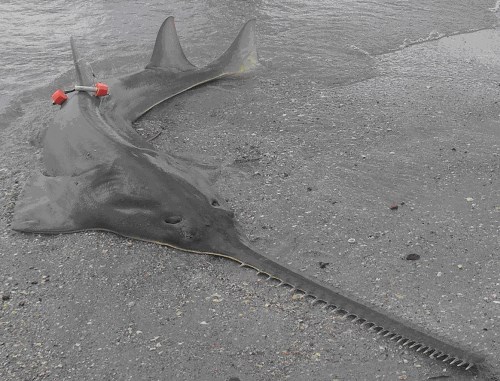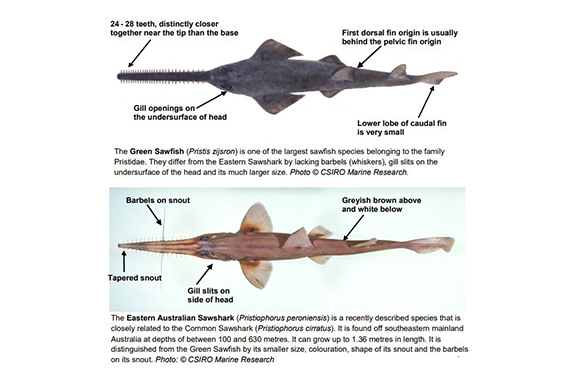
Green sawfish

Scientific name
Pristis zijsron
Status in NSW
Presumed extinct.
Characteristics
Green Sawfish have a shark-like body and a flattened head with a narrow blade-like snout studded with 24-28 pairs of ‘rostral teeth’. They are greenish brown or olive in colour on the upper surfaces and pale whitish below.
Species similar in appearance
Saw Sharks. Sawfish are similar in appearance to sawsharks, but key differences include the fact that sawfishes have the gill openings on the underside (not the side) of the head, and sawfishes do not have a pair of barbels (or whiskers) on the snout.
Size
At least 5m in Australian waters.
Distribution
Green Sawfish were once widely distributed in the northern Indian Ocean, around south and south-east Asia and around northern Australia and have been recorded as far south as Jervis Bay. The last confirmed sighting of the Green Sawfish in NSW was in 1972 from the Clarence River at Yamba.
Habitat
Green Sawfish are bottom dwelling rays commonly found in near-shore coastal environments, including estuaries, river mouths, embankments and along sandy and muddy beaches. They have been found in very shallow water less than 1 metre deep to offshore trawl grounds over 70 metres deep.
Why did the Green Sawfish become extinct in NSW?
- The toothed rostrum of the Green Sawfish combined with their active hunting behaviour makes them highly susceptible to capture in all fisheries that utilise nets.
- Deliberate capture for sale of the fins (for the shark-fin soup trade), flesh and saws.
- Land reclamation and degradation of the soft bottom areas that they use for feeding and breeding.
- Green Sawfish are long-lived, produce few young and mature later in life. This limits the ability for the species to recover from threats.


